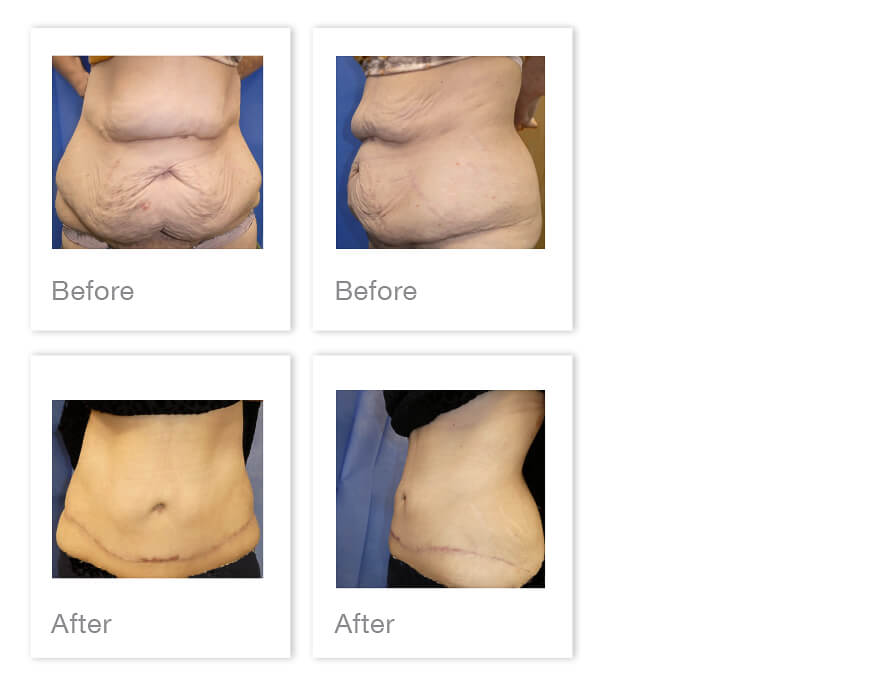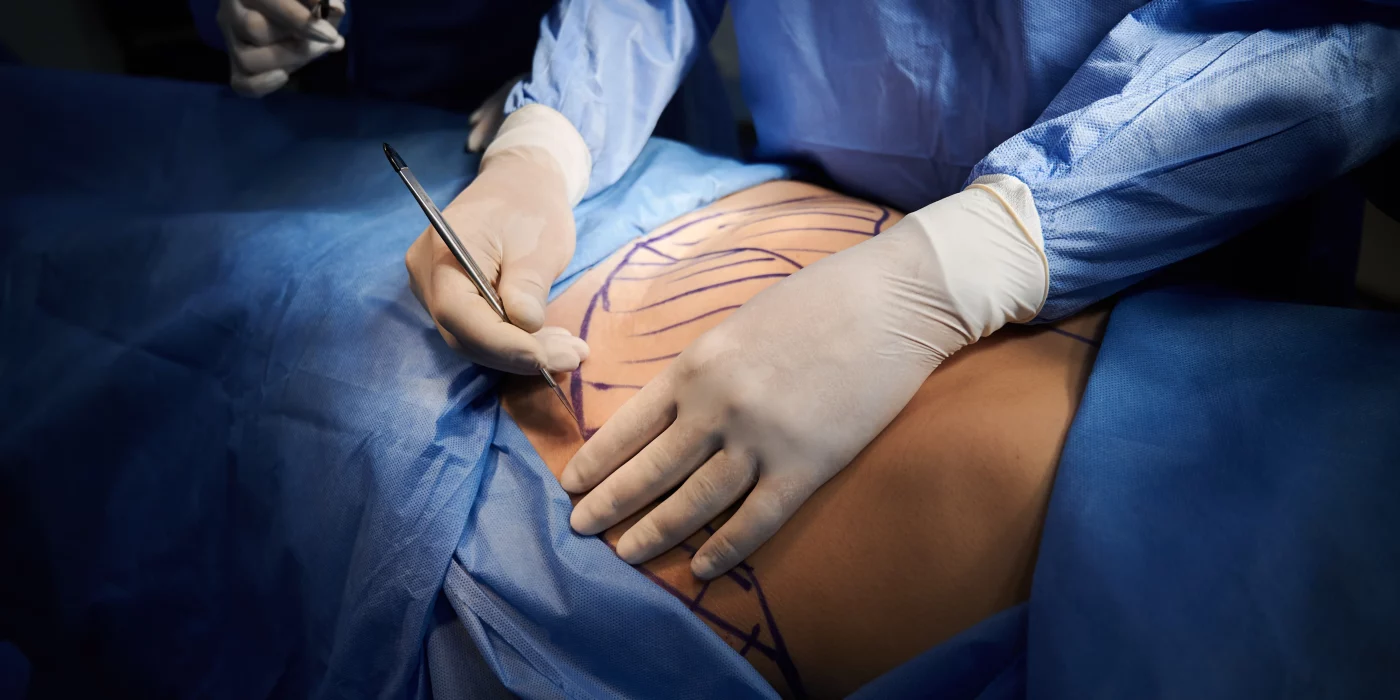What to expect from best abdominoplasty surgeon in Iran
1. Thorough Consultation:
– The best abdominoplasty surgeon in Iran should conduct a comprehensive consultation to understand your goals, medical history, and current health status.
– They should perform a physical examination to assess your abdominal area, skin elasticity, and muscle tone.
– The best abdominoplasty surgeon in Iran should discuss the different abdominoplasty techniques, potential risks, and expected outcomes.
– They should provide you with detailed information about the procedure, including the anesthesia options, incision locations, and recovery process.
2. Pre-Operative Instructions:
– The best abdominoplasty surgeon in Iran should provide you with detailed pre-operative instructions, including guidelines on diet, exercise, smoking cessation, and medication adjustments.
– They should advise you to avoid certain medications, such as blood thinners, that can increase bleeding risks during surgery.
– The surgeon may recommend specific supplements or vitamins to improve your overall health and prepare your body for the procedure.
3. Surgical Expertise:
– Choose a board-certified plastic surgeon who specializes in abdominoplasty and has extensive experience performing the procedure.
– Ask about their credentials, training, and the number of abdominoplasty surgeries they have performed.
– Look for a surgeon who stays up-to-date with the latest surgical techniques and technologies.
4. Realistic Expectations:
– The best abdominoplasty surgeon in Iran should set realistic expectations about the results of your abdominoplasty.
– They should explain that the procedure can improve the appearance of your abdomen but will not necessarily result in a “perfect” or “ideal” body.
– The surgeon should discuss the possibility of residual scars, which are typically hidden within the bikini line or undergarments.
5. Post-Operative Care:
– The best abdominoplasty surgeon in Iran should provide detailed post-operative care instructions, including pain management strategies, wound care, and activity restrictions.
– They should schedule follow-up appointments to monitor your healing progress and address any concerns or complications.
– The surgeon should be available to answer your questions and provide support throughout the recovery process.
6. Patient Safety:
– The surgeon should prioritize patient safety and follow strict protocols to minimize risks during and after surgery.
– They should have access to a well-equipped operating room and a team of experienced medical professionals.
– The best abdominoplasty surgeon in Iran should discuss potential complications, such as bleeding, infection, and blood clots, and explain how they will be managed.
7. Cost Transparency:
– The surgeon should provide a clear and detailed breakdown of the costs associated with your abdominoplasty, including surgical fees, anesthesia fees, facility fees, and any additional expenses.
– They should discuss payment options and work with you to create a financial plan that fits your budget.
8. Patient Satisfaction:
– Consider reading online reviews or testimonials from previous patients of the surgeon to gauge their level of satisfaction with the procedure and the surgeon’s care.
– Ask the surgeon if they can provide before-and-after photos of their abdominoplasty patients to help you visualize the potential results.
If you want to operate in Tehran, Dr Hessami, click the button below and follow the stepsStart your therapeutic journey
Abdominoplasty procedure step by step
The abdominoplasty procedure typically involves the following steps:
1. Pre-Operative Preparation:
– The patient undergoes a thorough medical evaluation and consultation with the surgeon to discuss their goals, medical history, and current health status.
– The best abdominoplasty surgeon in Iran marks the patient’s abdomen to indicate the areas of excess skin and fat that will be removed.
– The patient is given specific instructions on how to prepare for surgery, including guidelines on diet, exercise, smoking cessation, and medication adjustments.
2. Anesthesia:
– Abdominoplasty is typically performed under general anesthesia, which means the patient will be completely asleep during the procedure.
– In some cases, local anesthesia with sedation may be used for patients with certain medical conditions or preferences.
3. Surgical Incision:
– The surgeon makes an incision across the lower abdomen, typically just above the pubic hairline. The length and shape of the incision will depend on the extent of excess skin and fat that needs to be removed.
– In some cases, a second incision may be made around the navel to allow for its repositioning.
4. Separation of Tissues:
– The surgeon carefully separates the skin and underlying tissues from the abdominal muscles. This creates a pocket or space beneath the skin.
5. Muscle Repair (Optional):
– If the patient has weak or separated abdominal muscles, the surgeon may perform a muscle repair or tightening procedure. This involves suturing the muscles together to create a stronger abdominal wall.
6. Excess Skin Removal:
– The surgeon removes the excess skin and fat from the abdomen, taking care to preserve the blood supply to the skin.
7. Skin Redraping:
– The remaining skin is then pulled down and redraped over the abdomen. The surgeon may use sutures or staples to secure the skin in place.
8. Umbilical Repositioning (Optional):
– If the navel was repositioned, the surgeon will create a new opening in the skin for the navel and suture it in place.
9. Wound Closure:
– The surgeon closes the incisions with sutures or staples. Sterile dressings are applied to protect the wounds.
10. Post-Operative Care:
– The patient is typically taken to a recovery room for monitoring and pain management.
– A compression garment may be placed around the abdomen to help reduce swelling and support the healing tissues.
– The patient will receive detailed instructions on post-operative care, including wound care, pain management, activity restrictions, and follow-up appointments.
The entire abdominoplasty procedure typically takes several hours to complete, depending on the extent of the surgery and the individual patient’s needs.

During abdominoplasty surgery
During abdominoplasty surgery, the patient is typically under general anesthesia, which means they are completely asleep and unaware of the procedure.
Here is a step-by-step overview of what happens during abdominoplasty surgery:
1. Patient Positioning:
– The patient is positioned on their back on the operating table.
– Their arms are typically placed at their sides or on armrests to ensure they are comfortable and do not interfere with the surgical field.
2. Incisions:
– The surgeon makes an incision across the lower abdomen, typically just above the pubic hairline. The length and shape of the incision will depend on the extent of excess skin and fat that needs to be removed.
– In some cases, a second incision may be made around the navel to allow for its repositioning.
3. Separation of Tissues:
– The surgeon carefully separates the skin and underlying tissues from the abdominal muscles. This creates a pocket or space beneath the skin.
4. Muscle Repair (Optional):
– If the patient has weak or separated abdominal muscles, the surgeon may perform a muscle repair or tightening procedure. This involves suturing the muscles together to create a stronger abdominal wall.
5. Excess Skin Removal:
– The surgeon removes the excess skin and fat from the abdomen, taking care to preserve the blood supply to the skin.
6. Skin Redraping:
– The remaining skin is then pulled down and redraped over the abdomen. The surgeon may use sutures or staples to secure the skin in place.
7. Umbilical Repositioning (Optional):
– If the navel was repositioned, the best abdominoplasty surgeon in Iran will create a new opening in the skin for the navel and suture it in place.
8. Wound Closure:
– The surgeon closes the incisions with sutures or staples. Sterile dressings are applied to protect the wounds.
9. Compression Garment:
– A compression garment may be placed around the abdomen to help reduce swelling and support the healing tissues.
10. Post-Operative Care:
– The patient is typically taken to a recovery room for monitoring and pain management.
– They will receive detailed instructions on post-operative care, including wound care, pain management, activity restrictions, and follow-up appointments.
Throughout the procedure, the surgical team closely monitors the patient’s vital signs and overall well-being to ensure their safety and comfort.
Recovery after abdominoplasty surgery
Recovery after abdominoplasty surgery typically involves the following stages:
1. Immediate Post-Operative Period:
– The patient is typically taken to a recovery room for monitoring and pain management.
– They may experience some pain, swelling, and discomfort in the abdomen.
– A compression garment is usually worn to help reduce swelling and support the healing tissues.
– The patient may be given antibiotics to prevent infection and pain medication to manage discomfort.
2. Hospital Stay:
– Most patients stay in the hospital for 1-2 days after abdominoplasty surgery.
– During this time, the medical team will monitor the patient’s vital signs, provide pain management, and ensure that the wounds are healing properly.
– The patient will be given instructions on how to care for their wounds and manage their pain at home.
3. Initial Recovery at Home:
– The patient will need to rest and avoid strenuous activity for several weeks after surgery.
– They should keep the incisions clean and dry, and follow the surgeon’s instructions for wound care.
– Compression garments should be worn as directed by the surgeon.
– Pain medication may be continued as needed to manage discomfort.
– The patient should avoid smoking and alcohol, as these can interfere with healing.
4. Follow-Up Appointments:
– The patient will need to attend regular follow-up appointments with the surgeon to monitor their healing progress and address any concerns.
– The best abdominoplasty surgeon in Iran may remove the sutures or staples from the incisions at these appointments.
5. Gradual Return to Activity:
– The patient can gradually increase their activity level as they heal.
– They should start with light walking and gradually progress to more strenuous activities as tolerated.
– It is important to avoid lifting heavy objects or engaging in activities that put strain on the abdomen.
6. Final Results:
– The final results of abdominoplasty surgery may take several months to fully develop as the swelling subsides and the tissues settle into their new positions.
– Most patients are able to see a significant improvement in the appearance of their abdomen, with a flatter and more toned look.
It is important to follow the best abdominoplasty surgeon in Iran instructions carefully during the recovery period to ensure optimal healing and minimize the risk of complications.

